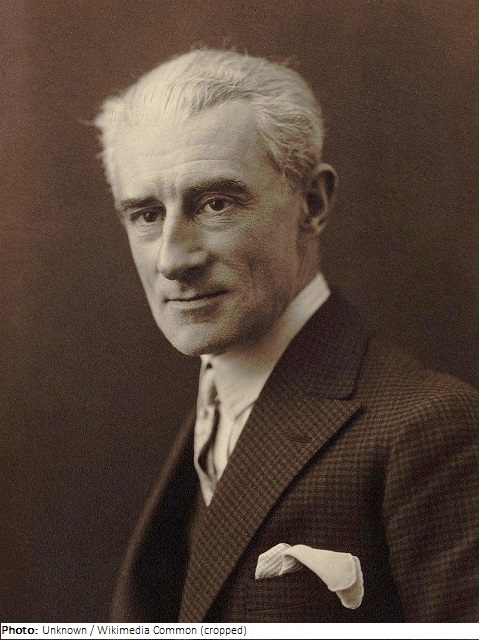Maurice Ravel

Biographical information
| Roles | Referee |
|---|---|
| Sex | Male |
| Full name | Joseph-Maurice•Ravel |
| Used name | Maurice•Ravel |
| Born | 7 March 1875 in Ciboure, Pyrénées-Atlantiques (FRA) |
| Died | 28 December 1937 in Paris XVIe, Paris (FRA) |
| NOC |  France France |
Biography
Maurice Ravel’s father was a Swiss engineer, and his mother was of Basque origin. After the family moved to Paris, he began taking piano lessons in piano at age seven and lessons in harmony at age 12. In 1889, he entered the Paris Conservatory. He left the Conservatory in 1895 and finished work on several compositions the same year. In 1897, he returned to the Conservatory to study with Gabriel Fauré and André Gedalge (1856-1926); during this period, Ravel wrote his famous Pavane pour une infante défunte (Pavane for a dead princess) for piano (1899).
Ravel won the 2nd Prix de Rome in 1901 with the cantata Myrrha; subsequent attempts to win the Grand Prix de Rome were ultimately unsuccessful. Suspicions of unfair nepotism led to a crisis at the Conservatory. By now Ravel had written a number of his most famous compositions and was considered a talented disciple of Claude Debussy (1862-1918) as an Impressionist. Ravel’s method undoubtedly has parallels with Debussy’s, but there were also important differences and in part, he anticipated Debussy’s developments. Ravel’s name became known in France and other European countries, but for many years he was still considered an ultra-modernist.
Ravel adopted ideas from Igor Stravinsky, Spanish and Basque folklore and jazz, and the music of the Baroque period. An exuberance of exotic colors characterizes his ballet Daphnis et Chloé (1912), his opera L’heure espagnole (The Spanish Hour, 1907-09, revised 1911), song cycles, and virtuoso pieces for piano (Miroirs, Gaspard de la nuit). He wrote Daphnis et Chloé for Diaghilev’s Ballets Russes; another ballet, Boléro, became Ravel’s most spectacular success as an orchestral piece. Other works are deliberately austere in their classical clarity, especially his piano music.
Ravel never married and took virtually no pupils; he was never on the faculty of any school. As a pianist, he performed only his works; even as a conductor, his technique was barely sufficient to warrant the performance of his music.
When World War I broke out in 1914, he was rejected by the military because of his weak health. Eventually, he was accepted into the medical corps at the front. In 1916, however, he had to go to a hospital to recuperate. In 1922, he visited Amsterdam and Venice and conducted his music; in the following years, he performed in various countries in Europe and in 1928 made a tour of America as a conductor and pianist. That same year he received the degree of D.Mus. honoris causa from Oxford University.
Shortly thereafter, Ravel began to have difficulty with muscle coordination and suffered from bouts of aphasia, symptoms that indicated a brain disease. He underwent brain surgery in December 1937 but died 9 days later.
Referee
| Games | Sport (Discipline) / Event | NOC / Team | Phase | Unit | Role | As | |
|---|---|---|---|---|---|---|---|
| 1924 Summer Olympics | Art Competitions |  FRA FRA |
Maurice Ravel | ||||
| Music, Open (Olympic) | Final Standings | Judge |